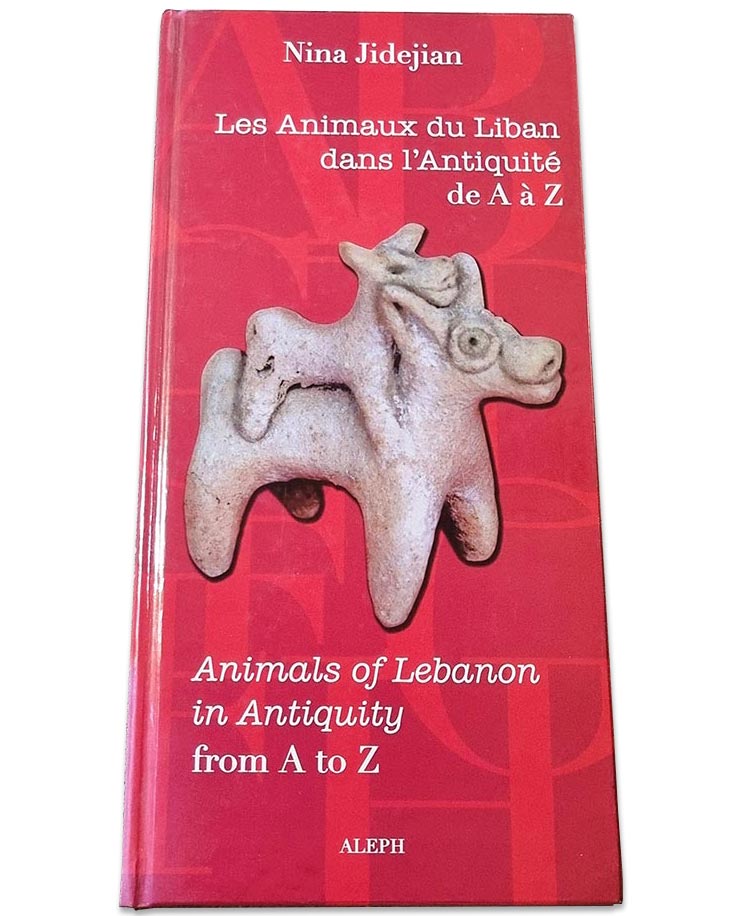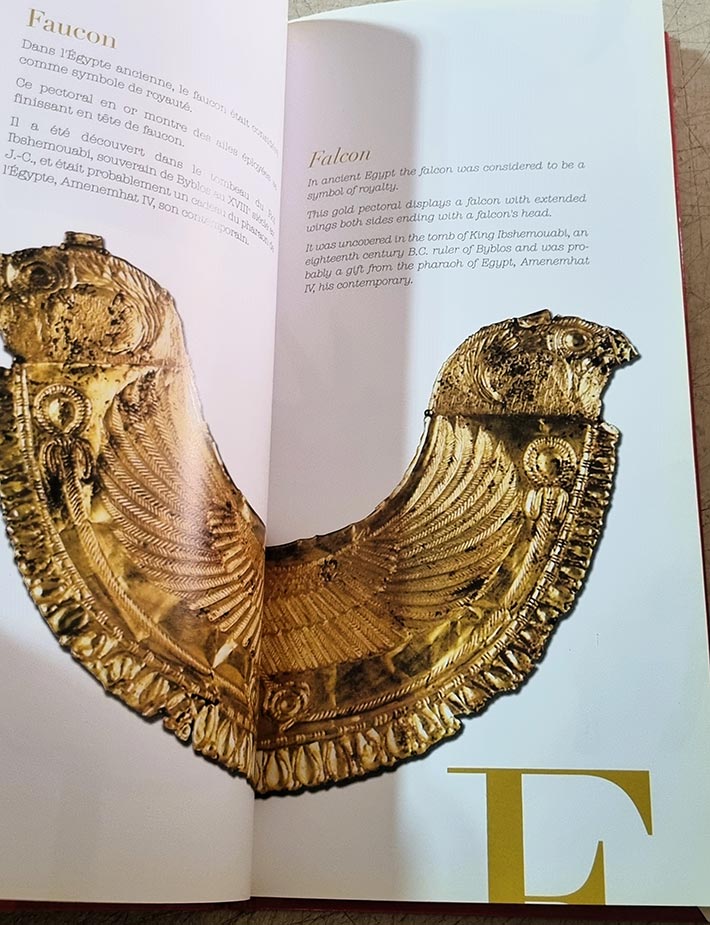Nina Jidejian – Les Animaux du Liban dans l’Antiquité – Animals of Lebanon in Antiquity
Animals of Lebanon in Antiquity from A to Z
$37.00
Description
LebanonPostcard presents the rare book Nina Jidejian – Les Animaux du Liban dans l’Antiquité de A à Z – Animals of Lebanon in Antiquity from A to Z – Aleph – Hardcover book, 32×16 cm, 76 pages (Used but still in good condition)
Prologue (Extract)
There is abundant archaeological evidence proving that early Man in Lebanon lived side by side with animals of all sorts: wild, domesticated or venerated as gods.
Several millennia ago Man abandoned his tree shelter to seek refuge in a cave. He learned to plant and harvest grain instead of searching for his sustenance here and there. He thus discovered Agriculture, a major step in the history of mankind.
He was also able to domesticate the wild animals that abounded in the forest: the boar, the goat, the bull, the dog.
Then Man began to believe in an all-powerful force that controlled him and his environment and he began to believe in a life after death.
Five thousand five hundred years ago, during the Chalcolithic Age, a young man was buried in a funerary jar in Byblos. Above him was laid a smaller jar that contained the remains of his dog in order to accompany him in the after-life.
We thus see that Man in Lebanon understood from the earliest times that animals were essential for his well-being and his survival.
Strong religious and commercial ties developed with Egypt due to the cedar trade. Sacred animal gods made their appearance in Lebanon: the bull, the hippopotamus, the lion, the cat. Local artisans in their workshops made representations of these animals in terra cotta, faïence, ivory, bronze.
Later on the mosaicists used animals, wild or domesticated and floral designs to decorate the floors in churches and in the residences of the… …
Prologue (Extrait)
D’abondantes preuves archéologiques en font foi: sauvages, domestiques ou vénérés comme des dieux, les animaux de toutes espèces accompagnaient la vie des premiers habitants du Liban.
Il y a de cela plusieurs millénaires, l’Homme abandonna l’arbre, son premier refuge, et trouva un nouvel abri dans des cavernes. Il apprit à vivre de récoltes plutôt que de cueillette. Ainsi naquit l’agriculture, étape majeure de l’histoire de l’humanité.
Il parvint à domestiquer les animaux sauvages qui peuplaient la forêt les sangliers, les chèvres, les bœufs, les chiens…
Puis l’Homme se mit à croire en une force surnaturelle et toute puissante qui devait, à ses yeux, régir sa vie et son environnement. Il commença alors à croire en une existence dans l’au-delà.
Il y a cinq mille cinq cents ans, à l’âge chalcolithique, un jeune homme fut enterré dans une jarre funéraire, à Byblos. Une autre jarre plus petite était posée sur lui. Elle contenait les restes de son chien qui, ainsi, l’accompagnait dans l’au-delà.
Les premiers habitants du Liban avaient ainsi compris que les animaux étaient essentiels à leur bien-être et leur survie.
D’étroits liens – religieux et commerciaux – établis avec l’Égypte, grâce notamment au commerce du bois de cèdre, favorisèrent l’apparition d’animaux sacrés au Liban, comme le taureau, l’hippopotame, le lion, le chat…
Les artisans de l’époque façonnaient dans leurs ateliers des représentations d’animaux en terre cuite, en faïence, en ivoire ou en bronze.
LebanonPostcard will be responsible for sending the book you order, through a fast courier with a tracking number, guaranteeing reception of the package. The souvenirs may take three to five days to arrive, according to the country they are sent to.
Additional information
| Weight | 0.7 kg |
|---|---|
| Dimensions | 1 × 1 × 1 cm |









